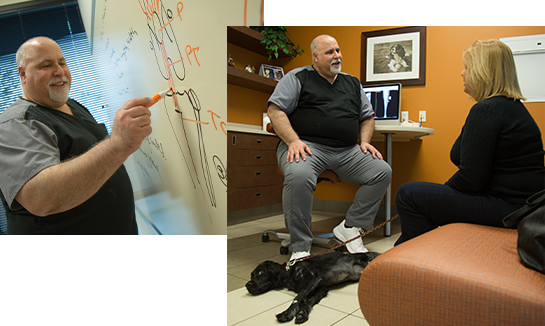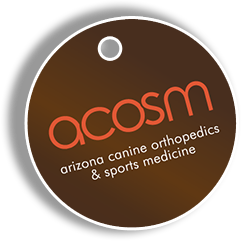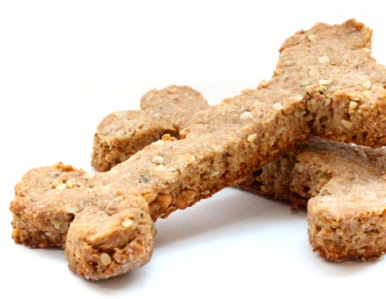Comparison of Arthroscopy and Arthrotomy for Diagnosis of Medial Meniscal Pathology
Pozzi, A., et al. “Comparison of Arthroscopy and Arthrotomy for Diagnosis of Medial Meniscal Pathology: An Ex Vivo Study.” Veterinary Surgery. Vol. 37:749–755, 2008.
Key Point: Arthroscopy is more sensitive than open arthrotomy for evaluating medial meniscal pathology. Whether arthroscopy or arthrotomy is performed, the addition of physical probing of the meniscus, compared to visualization alone, improves the ability to detect meniscal tears.
Medial meniscal injury is reported to occur concurrently in up to ~80% of stifle joints with cranial cruciate ligament injury. Injury to the medial meniscus can occur as a late complication following stabilization of the CCL-deficient knee. While the vast majority of late-onset tears represent a new injury to the meniscus, some are likely the result of latent tears, or those that were present to some degree at the time of the original surgery. As subsequent meniscal injury represents a source of recurrent lameness and increased financial burden to the dog owner, thorough evaluation of the knee joint, including the menisci, at the time of surgery is an important component of management of cranial cruciate ligament disease in all patients.
Meniscal injuries come in a variety of “flavors,” the most common of which is the vertical longitudinal tear - a tear straight down into the substance of the meniscus. If the torn portion of the meniscus does not displace forward within the joint (a so-called “bucket-handle” tear), then this type of injury may be difficult to visualize within the joint. While minimally-invasive imaging of the knee via CT or MRI is commonly performed in people, the value of these modalities in animals are limited by availability, cost and the need for additional anesthesia. Evaluation of the knee is commonly performed at the time of stabilization when managing CCL disease. Joint evaluation can either be performed via open arthrotomy or arthroscopy. During evaluation, the meniscus may be visualized only or may be physically palpated using an instrument (“probing”) to evaluate its integrity.
In this landmark study, published in Veterinary Surgery in 2008, Pozzi et al., evaluated the accuracy of diagnosing medial meniscal tears using two different types of open arthrotomy and arthroscopy, with or without the use of probing when compared to visualization alone in an experimental model. Limbs in this study were randomly assigned to groups based on meniscal tear type, method of joint assessment and the presence or absence of an intact CCL. The results of this study suggest that arthroscopy performed better than arthrotomy in identifying all types of meniscal tears. Furthermore, probing increased the odds of identifying a meniscal injury by 8 times during arthroscopy and greater than 2 times during arthrotomy when compared to visualization alone. To put this in perspective, arthroscopy with probing correctly identified >90% of meniscal tears, while arthrotomy without probing missed nearly 80% of meniscal tears in this study.
While there are a variety of approaches to assessment of the knee joint at the time of CCL surgery, at Arizona Canine Orthopedics we are committed to provided the highest level of care for our patients. At ACOSM, arthroscopy is considered the standard of care for most dogs weighing ~25 lbs or greater undergoing knee surgery. When compared with open surgical evaluation, stifle arthroscopy provides improved visualization of the joint by means of magnifcation, lighting and control of bleeding. Additionally, arthroscopy results in a more anatomically accurate evaluation of the joint, allowing for flexion, extension, rotation and translation of the joint, movements not possible during open arthrotomy. In patients considered too small for traditional arthroscopy, other means of minimally-invasive joint evaluation may be possible, however even when arthrotomy is indicated, probing is always performed as part of our standard meniscal assessment. These principles translate into a more thorough evaluation of the joint, and improve your surgeons’ likelihood of diagnosing and treating concurrent meniscal injuries, thereby improving recovery and reducing the incidence of recurrent lameness or the need for additional surgery.

Get Informed
Schedule a Consultation
Make no mistake, all surgical procedures are serious. Get the information you need and know your options. Then make an informed decision. Like any service, not all veterinary services are equal. Call to schedule or ask questions.
Call our clinic at 480.998.5999
or Email us.
FAQ
What Makes ACOSM Stand Out?
We pride ourselves on doing things differently. We insist on providing premier service to our patients and their caregivers. There's a saying, "Price is what you pay; value is what you get." At ACOSM, delivering on value is our mission.
We're proud of our experience, skill, and outcomes; it puts us in a category of one, which means you'll experience things with us not promised by any other veterinarian in AZ.
Dog Blog
Distal Femoral Osteotomy for Comprehensive Treatment of Medial Patella Luxation
Three-Dimensional Printed Patient Specific Guides for Acute Correction of Deformities
Comparison of Arthroscopy and Arthrotomy for Diagnosis of Medial Meniscal Pathology
Second Look Arthroscopic Findings After Tibial Plateau Leveling Osteotomy
Resources
New Patient Registration Forms
- New Patient Packet

- New Patient Packet - Online
 New online form!
New online form! - Patient Referral Form

- Patient Referral Form - Online


